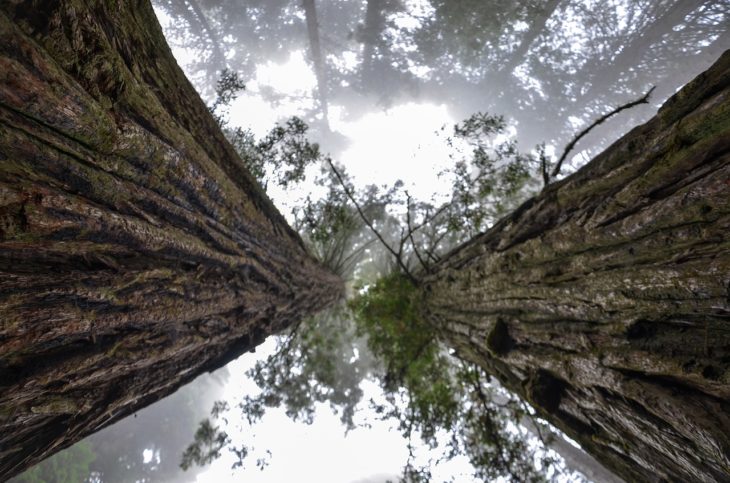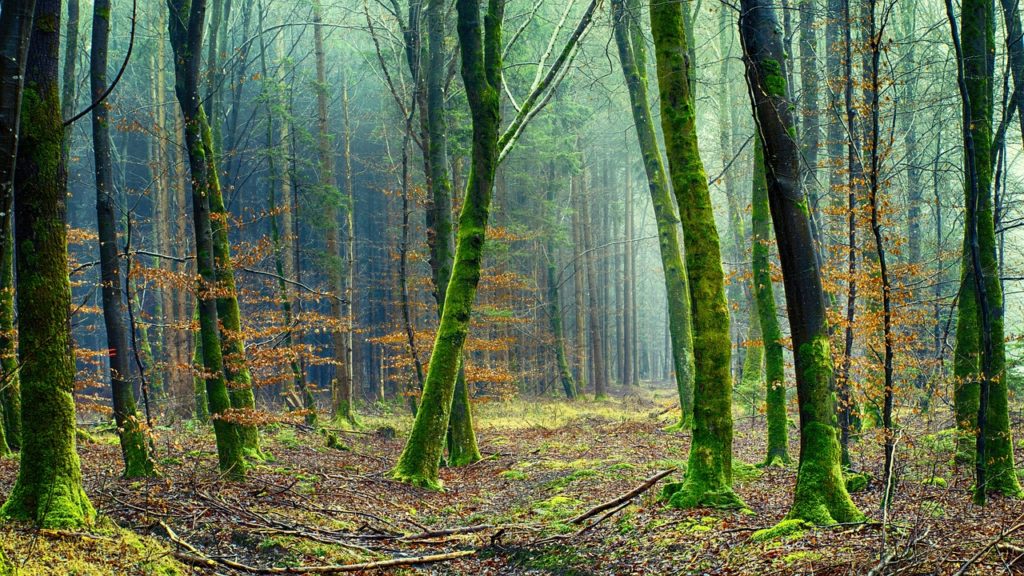Treevolution: How Trees Came First and Rot Came Later in Earth’s Deep Past

Shut your eyes for a moment and imagine yourself in Somerset. What do you see? Perhaps you are amongst the gently swelling hills of Bath, or the rugged splendour of the Cheddar Gorge? Can you taste the cool, crisp cider on your lips? Now imagine that a six-foot long woodlouse has noisily slopped out of the mud next to you. Confused? Scared? You should be, because Somerset has changed a lot in the last 350 million years…
Slap on some super-strength bug repellent, because this is the Carboniferous – a time when Britain is predominantly mangrove swamp occupied by millipedes the size of cars, 10ft long predatory newts and dragonflies that could carry off a toddler. Flowering plants have yet to evolve and the forest around you – teeming with insects that’d give even Steve Irwin nightmares – was made of huge, fern-like trees balanced on shallow, spindly roots. These giants, called lepidodendrons, could easily reach heights of 150ft: a neat trick made possible by a fancy new organic compound called lignin.
Lignin is a rigid and versatile scaffold and was used by plants to form the first structures that we would recognise today as wood. Lignin is based on benzene (yes, like petrol) molecules rather than cellulose, so is tougher and stronger than normal, sugary plant tissue. Lepidodendrons grew thick sheathes of lignin-rich bark, rendering their sweet cellulose core impervious to assault by the bacteria and fungi that had evolved to digest it.
An Abundance of O2
“So what?”, you might ask. Well, if you really had been transported to this strange land (and avoided thus far being devoured by spiders the size of poodles), you would no doubt feel a strange sense of elation. Chances are you’d chalk it up to not being a snack for some hungry giant amphibian, but the real answer would probably have more to do with the fact that the level of oxygen in the air is around 15% higher than it is today. Whilst it was this abundance of life-giving oxygen that allowed the flora and fauna of the carboniferous to reach such prodigious size, it came with a problem attached. Much as carbon dioxide and other greenhouse gases are causing a rapid warming of the planet today, high levels of oxygen in the Carboniferous were causing cooling and glaciation. For much of the earth’s history thus far, volcanoes had been merrily spewing carbon dioxide into the atmosphere and levels were stable, but with the rapid advent of plants in the Carboniferous and preceding Devonian period, increasing amounts of carbon dioxide were being pulled out of the atmosphere. Lignin meant that the plant matter produced with this carbon dioxide, which had previously been easily digestible cellulose, was now too complex for bacteria to dissolve or break down.
So, you have a world covered in lush rainforest, stretching almost from pole to pole.
Each tree that fell when it died – well, it just stayed there.

Imagine billions of hectares of forest growing and dying over the course of tens of millions of years, and the dead trees just hanging around. Year on year, the world got colder and colder as more carbon dioxide was sucked out of the atmosphere. From the start of the Carboniferous, it took more than 50 million years for one type of fungus, called Agaricomycetes, to develop the complex tools to break down lignin. What would the world be like if it had taken 50 or 100 million more? Would there still be giant scorpions in Wiltshire? Or would the earth eventually have frozen completely? It almost did – the rapid cooling eventually caused an ice age that wiped out the lush forests, killing 10% of all species on earth and leaving even more dead trees in its wake.
Dead Timber & Decay
Thankfully, once the chemical process needed to deal with lignin was developed, the dead timber that remained on the surface was taken care of in a few generations. And the material that slumped beneath the thick, soupy waters of that primeval swamp? Well, some 300 million years of unfathomable heat and pressure transformed it into something capable of changing the world. 90% of coal on earth was formed in the Carboniferous, and if you stand in that same spot in Somerset now where the vast stands of lepidodendron once stood, you will be on top of the North Somerset coal measure, a rich seam of fossil fuels laid down in this intense period where the mechanism for woody tissue to naturally decay simply didn’t exist. The North Somerset coal measure is not the only immeasurably rich coal field left from the Carboniferous – Britain is peppered with them. These collieries pumped out the huge quantities of fuel required to turn our tiny islands into the mechanized heart of the British Empire and feed the fires of intense social and technological change that characterised the industrial revolution.
So, next time you’re replacing a rotten window sill, take heart in these two facts: you’ll never be eaten by a giant newt and, despite the evolution of lignin-eating fungi, quality, durable timbers will still last a lifetime. After the evolution of wood-eating fungus cleared the lepidodendron forests, a huge range of diverse trees, with clever means of beating the fungus back, soon evolved to fill the ecological gaps. Some of them were the distant ancestors of trees that we would recognise today – winners in an evolutionary race, the margins of which were littered with organisms that didn’t make it. The ultimate proof of the durability of timber.
Blog | 7 years AGO